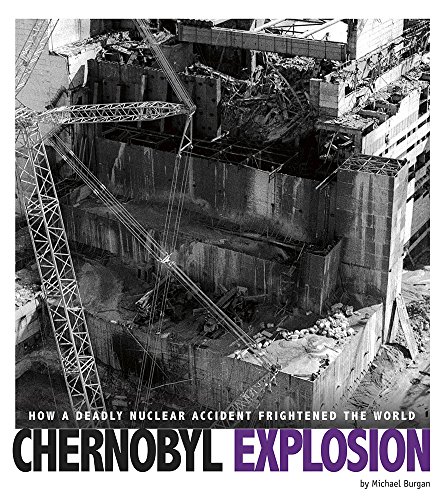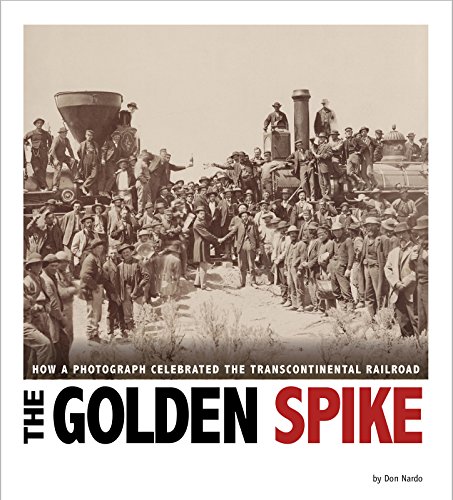-
Shadow Catcher: How Edward S. Curtis Documented American Indian Dignity and Beauty
Michael Burgan
Library Binding (Compass Point Books, Jan. 1, 2015)At the turn of the 20th century, photographer Edward S. Curtis devoted his life to learning all he could about American Indians and sharing it with world. He took his first photo of an American Indian in 1895, and for the next 30 years he traveled the West and north to Alaska to chronicle traditional native culture. The result was a magnificent―and controversial―20-volume project, The North American Indian. While some scholars and American Indians found fault with the work Curtis published, many others greatly appreciated it. His grand endeavor was nearly forgotten when he died in 1952, but Curtis' rediscovered photographs are now recognized as treasures that will live forever. Y
Y
-
Assassination and Its Aftermath: How a Photograph Reassured a Shocked Nation
Don Nardo
Paperback (Compass Point Books, Sept. 1, 2013)The world was shocked and frightened when President John F. Kennedy was gunned down by an assassin's bullet in 1963. What would happen to the government of the most powerful nation on Earth? When Kennedy's vice president, Lyndon Baines Johnson, took the presidential oath of office on Air Force One just hours after the assassination, the White House photographer was there. Cecil Stoughton's iconic photo showed the world that the smooth and orderly transfer of power called for in the U.S. Constitution had occurred. His photo helped ease the shock, tension, and fear in an anxious country. Y
Y
-
Lunch Counter Sit-Ins: How Photographs Helped Foster Peaceful Civil Rights Protests
Danielle Smith-Llera
Library Binding (Compass Point Books, Aug. 1, 2018)On point historical photographs combined with strong narration bring the saga of the Woolworth lunch counter sit-ins in the early 1960s to life. Readers will learn about the four brave college students who started it all, as well as the many who came after. These events changed the world. The photographer who took the photographs shown in this book is now in his 90s, but he agreed to an exclusive interview for this book. Y
Y
-
Ground Zero: How a Photograph Sent a Message of Hope
Don Nardo
Paperback (Compass Point Books, Aug. 1, 2016)The tragic events of September 11, 2001 sent shockwaves around the globe that are still felt today. Nearly 3,000 people died in the terrorist attacks and thousands more were injured. On the afternoon of the attacks, three firefighters paused in their rescue work to raise an American flag at Ground Zero in New York City. In the midst of horror and despair, the iconic photo of the men would remind Americans that they were far from beaten. It represented the country's strength, courage, decency, and its hope for the future. Z
Z
-
Inside the Situation Room: How a Photograph Showed America Defeating Osama bin Laden
Dan Elish
Paperback (Compass Point Books, Aug. 1, 2018)On-point historical photographs combined with strong narration bring the story of the raid that captured bin Laden to life. Kids will feel as though they are in the room with President Barack Obama, Secretary of State Hillary Clinton, and the others in the cabinet who called for and monitored the raid. Primary source quotations make the event feel immediate, and photographs by the White House photographer add to the immediacy, and the understanding of the risks and dangers posed by the ultimately successful mission. Z
Z
-
Death at Kent State: How a Photograph Brought the Vietnam War Home to America
Michael Burgan
Library Binding (Compass Point Books, Aug. 1, 2016)It didn't seem possible. Four college students shot dead May 4, 1970, by Ohio National Guardsmen during a protest against the Vietnam War. The shootings at Kent State University would shock the nation and spark a mass student strike across the country, the only one in U.S. history. A photojournalism student's photograph of a teen girl crying in anguish over a victim's dead body would win the Pulitzer Prize and become a symbol of the antiwar movement. Z
Z
-
Chernobyl Explosion: How a Deadly Nuclear Accident Frightened the World
Michael Burgan
Paperback (Compass Point Books, Jan. 1, 2018)The long-term damage from an accident at the Chernobyl nuclear power plant more than 30 years ago is still unknown. When explosions ripped through the reactor in rural Ukraine, then part of the Soviet Union, they spewed huge amounts of radioactive material into the atmosphere and caused the worst nuclear disaster in history. About 10,000 people have died or will die because of their exposure to radiation, and experts worry about the children born to parents who were living near the disaster area. With international help, Ukraine has enclosed the damaged reactor, giving scientists time to figure out what the future holds. Z
Z
-
Face of Freedom: How the Photos of Frederick Douglass Celebrated Racial Equality
Emma Carlson-Berne
Library Binding (Compass Point Books, Aug. 1, 2017)Frederick Douglass, abolitionist, writer, political activist, reformer has been called the most important African-American of the 1800s. He was also the most photographed American of the 1800s. Douglass, who escaped enslavement to work tirelessly on behalf of his fellow African-Americans, realized the importance of photography in ending slavery and achieving civil rights. The many portraits of Douglass showed the world what freedom and dignity looked like. Z
Z
-
Hubble Deep Field: How a Photo Revolutionized Our Understanding of the Universe
Don Nardo
Paperback (Compass Point Books, Aug. 1, 2017)A series of photos taken from space more than 20 years ago revealed thousands of unknown galaxies in a tiny patch of "empty" space. Called the Hubble Deep Field, the amazing image is made up of hundreds of photos combined into one. It was taken over the course of 10 days from the Hubble Space Telescope and has prompted astronomers and other scientists to speculate about universe's size, shape, and age. How long ago did the first galaxies appear? Have they always looked like they do today, or have their shapes evolved over time? And will they, along with the universe itself, go on expanding forever? The Hubble Deep Field has helped to answer some of these questions. Z
Z
-
The Golden Spike: How a Photograph Celebrated the Transcontinental Railroad
Don Nardo
Library Binding (Compass Point Books, Jan. 1, 2015)In the mid-1860s, as the Union Pacific Railroad headed westward from Nebraska, another company, the Central Pacific, pushed eastward from California. Their goal was to meet somewhere in between, forming a single railway line that would bridge the continent. That historic meeting took place in May 1869 in northern Utah, and photographer Andrew J. Russell was there to document the historic event. His work resulted in one of the most important photos of the 19th century and probably the most famous railroad image of all time. The photo, often called “East and West,” was viewed by a worldwide audience and affirmed that railroads were at the cutting edge of transportation technology. The continent was now linked. Y
Y
-
Basketball
John F. Grabowski
Library Binding (Lucent Books, Oct. 1, 2000)Discusses basketball, including its origins, evolution, the modern-day game, and famous basketball personalities. W
W
-
Football
John F. Grabowski
Library Binding (Lucent Books, Sept. 1, 2000)Examines the origins of American football and its roots in rugby, describes the evolution of rules, strategies, and philosophy towards the game, and profiles players and coaches who made significant contributions to the sport.